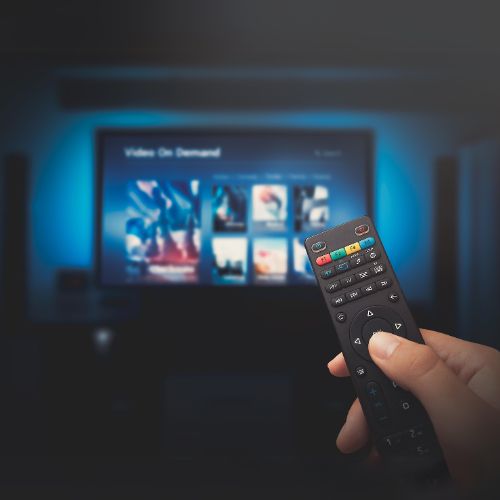
How Streaming Platforms Are Redefining the TV Experience: A Step-by-Step Guide
The way we consume television content has dramatically changed over the past decade, largely due to the rise of streaming platforms. Services like Netflix, Hulu, Disney+, and Amazon Prime Video have transformed how and when we watch TV. Traditional television models — where viewers tune in at specific times for their favorite shows — have been replaced by on-demand viewing, binge-watching, and personalized content recommendations.
In this guide, we’ll explore how streaming platforms are redefining the TV experience, the benefits and challenges they present, and practical tips for making the most of this new media landscape.
What Are Streaming Platforms?
Streaming platforms are services that allow users to watch video content — such as TV shows, movies, documentaries, and live broadcasts — over the internet. Unlike traditional cable or satellite television, streaming platforms deliver content on-demand, meaning viewers can watch whatever they want, whenever they want, as long as they have an internet connection.
Key Features of Streaming Platforms:
- On-Demand Viewing: Watch shows and movies at any time.
- Subscription-Based Models: Most platforms require a monthly or annual subscription.
- Content Libraries: Platforms offer vast libraries of content, including original programming.
- Multi-Device Access: Streaming can be done on a wide range of devices, from smart TVs to smartphones.
The Shift from Traditional TV to Streaming
For much of television history, viewers were tied to specific broadcast schedules. Cable packages were expensive, and you had to watch shows when they aired unless you recorded them. Streaming has changed all of that by giving consumers more control over what they watch and when.
Here’s how streaming platforms are redefining the TV experience:
1. Binge-Watching Culture
One of the most significant changes streaming platforms have brought is the ability to binge-watch shows. Unlike traditional TV, which releases episodes weekly, streaming services often drop entire seasons at once. This allows viewers to watch multiple episodes back-to-back without waiting, transforming the way stories are told and consumed.
Example: Netflix is known for releasing entire seasons of popular shows like Stranger Things or The Crown in one go, fueling binge-watching sessions and creating a communal viewing experience where everyone talks about the show at the same time.
2. Personalized Recommendations
Streaming platforms use sophisticated algorithms to recommend content based on user preferences and viewing habits. This personalization ensures that viewers are constantly discovering new content that aligns with their interests. Traditional TV, on the other hand, relied on viewers choosing from a preset schedule with little to no personalization.
Tip: Make use of your platform’s recommendation system. It can help you find new shows and movies that match your tastes, expanding your viewing experience.
3. Cutting the Cord: Cost Savings
With the rise of streaming, many people have chosen to “cut the cord” — canceling expensive cable or satellite subscriptions in favor of more affordable streaming services. Instead of paying for dozens of channels you don’t watch, streaming allows you to pay for specific content that you care about. This model has made TV more accessible to a broader audience.
Pro Tip: Consider bundling services (e.g., Hulu, Disney+, and ESPN+) to get a wider variety of content at a reduced cost.
4. Original Content and Exclusive Programming
Streaming platforms have become major players in content creation, producing their own original TV shows and movies that are exclusive to their platform. These original productions often push the boundaries of storytelling and creativity, attracting top-tier actors, directors, and writers. Platforms like Netflix and Amazon Prime Video have earned critical acclaim and even won awards typically reserved for traditional TV networks and movie studios.
Example: Shows like The Mandalorian (Disney+) and The Marvelous Mrs. Maisel (Amazon Prime) are exclusive to their platforms, drawing millions of viewers to subscribe.
5. Ad-Free Viewing
Another advantage streaming platforms have over traditional TV is the option for ad-free viewing. Many platforms offer ad-free subscriptions, which provide uninterrupted content, allowing viewers to enjoy their favorite shows and movies without commercial breaks. For many, this is a major draw compared to traditional TV, where ads are common.
6. Multi-Device Flexibility
Streaming platforms allow you to watch TV on various devices, including smart TVs, laptops, tablets, and smartphones. This flexibility means you’re no longer tethered to your living room TV. Whether you’re commuting, traveling, or simply relaxing at home, you can access your content from anywhere.
Tip: Download episodes or movies for offline viewing when traveling or in areas with poor internet connection, available on most streaming platforms.
Challenges and Considerations
While streaming platforms have transformed the TV experience in many positive ways, there are still challenges to consider:
1. Content Overload
With so many streaming services and content options available, it’s easy to feel overwhelmed by the sheer volume of shows and movies. Some viewers may struggle to decide what to watch, leading to “decision fatigue.”
Tip: To avoid feeling overwhelmed, create a watchlist and prioritize shows and movies you’re most interested in.
2. Multiple Subscriptions
As more platforms emerge, some viewers find themselves paying for multiple subscriptions, which can add up over time. While each platform offers unique content, subscribing to several at once may become costly, negating the savings of cutting the cord.
Pro Tip: Regularly review your subscriptions to ensure you’re only paying for services you actively use. Cancel or pause those that are less frequently watched.
3. Internet Dependency
Since streaming relies on a stable internet connection, it can be frustrating for those with limited or unreliable internet access. Buffering, slow loading times, or inability to stream in high-definition can detract from the viewing experience.
Tip: Opt for platforms that allow offline downloads so you can watch content without relying on internet speeds.
The Future of TV: Where Streaming is Headed
The future of TV will likely continue to evolve as streaming platforms innovate and adapt to new technologies. Here are some trends to watch for:
- Interactive Content: Streaming platforms are experimenting with interactive shows and movies where viewers can choose the outcome of the story, creating a more immersive experience.
- Virtual Reality (VR) and Augmented Reality (AR): Some platforms are looking into incorporating VR and AR into the viewing experience, offering viewers an even more immersive and interactive way to enjoy content.
- More Original Content: As competition among platforms increases, expect to see even more high-quality, original programming from both established platforms and new players.






